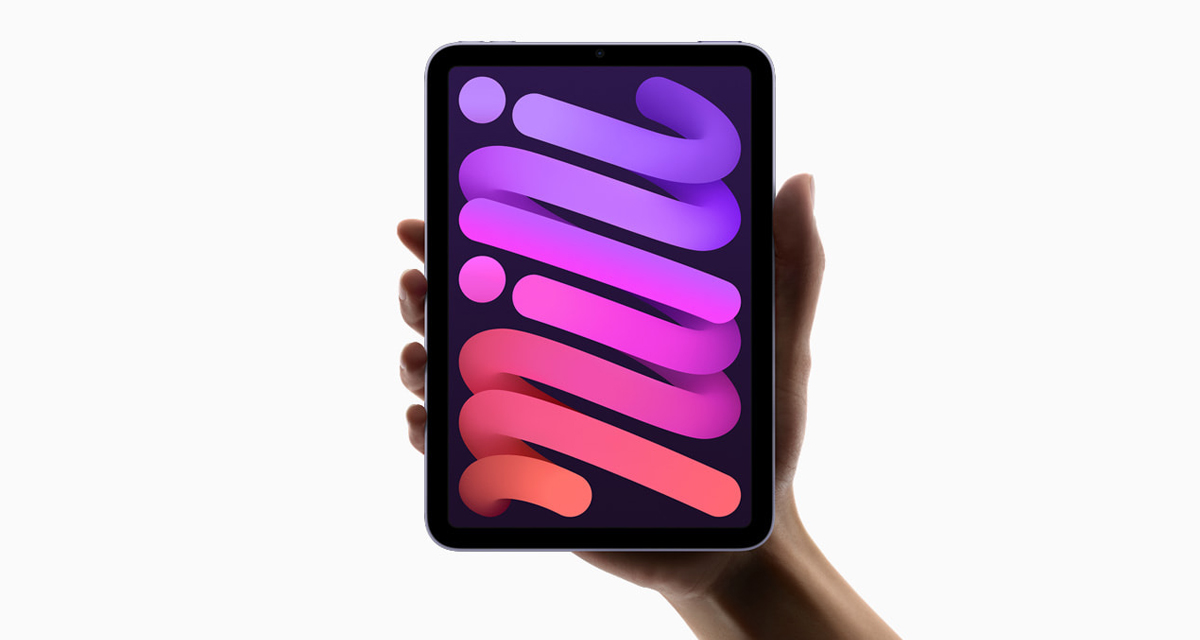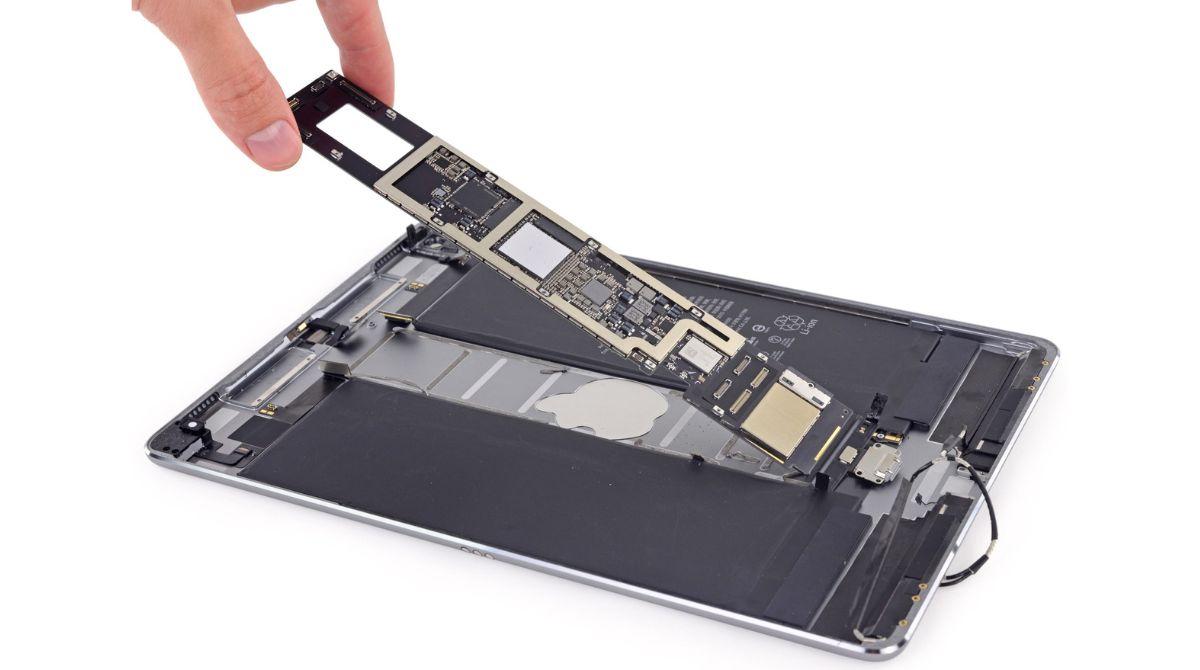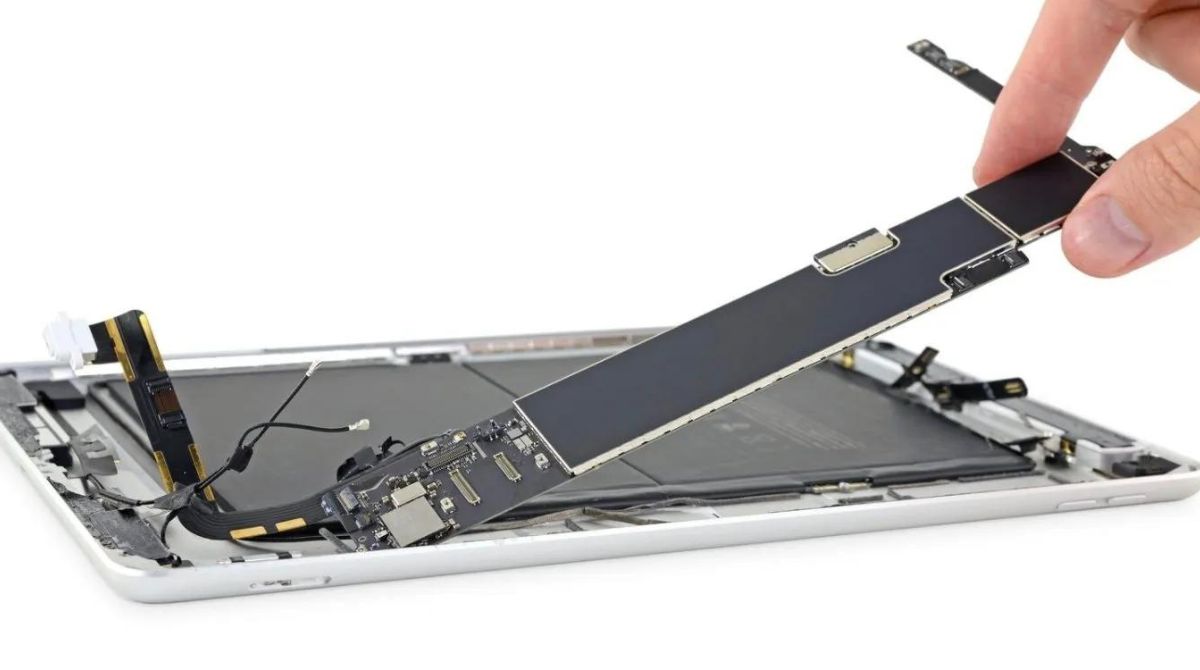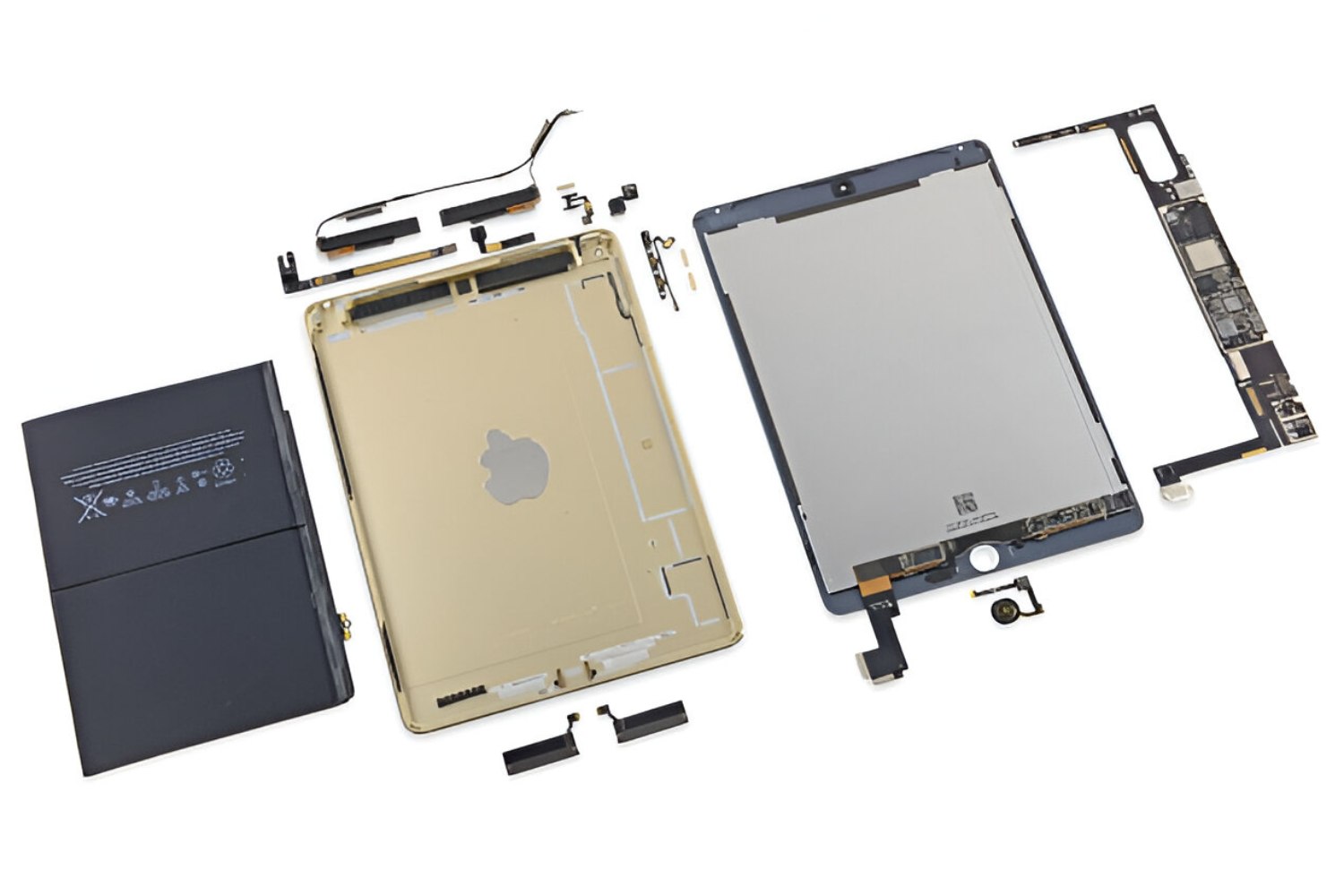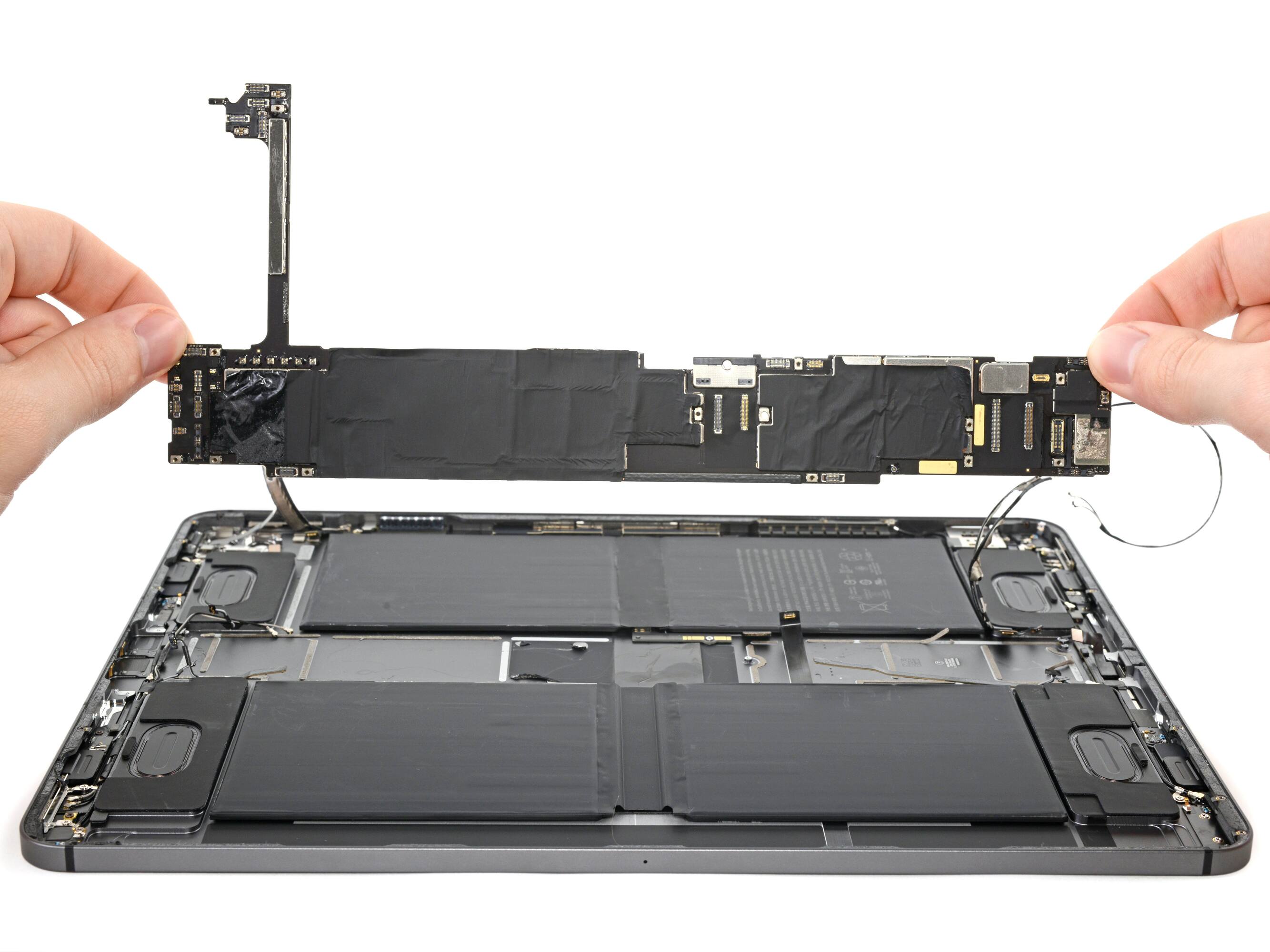Introduction
The iPad has evolved to become a versatile device that offers a range of functionalities, from productivity and entertainment to gaming and creative pursuits. One crucial component that impacts the performance and functionality of the iPad is its RAM (Random Access Memory). RAM plays a pivotal role in multitasking, app performance, and overall device efficiency. Understanding the significance of RAM and how it affects your iPad experience can help you make informed decisions when it comes to choosing the right device or deciding whether to upgrade.
In this article, we will delve into the world of iPad RAM, exploring its importance, the benefits of having more RAM, the RAM configuration in different iPad models, and ultimately answering the question – how much RAM does your iPad really need?
Before we dive into the details, let’s first understand the concept of RAM. RAM acts as temporary storage for the data that your device actively uses. It allows for quick and efficient access to data, enabling smooth switching between apps, faster loading times, seamless multitasking, and better overall performance.
When you open an application on your iPad, it loads the necessary data into RAM, allowing for quick access. The more RAM your device has, the more data it can store and access simultaneously, reducing the need to constantly retrieve data from the device’s storage, such as the solid-state drive. This results in faster and smoother app performance, especially when you have multiple apps running in the background.
Now that we have a basic understanding of what RAM does, let’s explore the benefits of having more RAM in your iPad.
RAM Explained
RAM, or Random Access Memory, is a critical component of a device’s performance. It acts as the short-term memory of your iPad, storing the data that apps need to run smoothly. When you launch an app, it gets loaded into RAM, allowing for quick access and execution of its functions.
But why is RAM important? Well, the more RAM your device has, the more operations it can perform simultaneously and the faster it can switch between tasks. When you have ample RAM, you can have multiple apps open without experiencing a significant drop in performance. This is especially crucial for resource-intensive tasks like gaming, video editing, or running complex applications.
Think of RAM as a workspace for active data. During multitasking, your iPad needs to store information from various apps and processes in RAM for quick and easy access. The more RAM you have, the more workspace you have available, enabling your iPad to handle multiple operations efficiently. On the other hand, if your device’s RAM is insufficient, you may experience slowdowns, lag, or even app crashes as your iPad struggles to manage the workload.
It’s important to note that RAM is different from storage capacity. While storage determines how much data your iPad can permanently store, RAM affects the device’s ability to process and handle data in real-time. When you install applications or store files on your iPad, they consume storage space, but when you run those applications, they rely on RAM to function smoothly.
The size of RAM is measured in gigabytes (GB). iPads typically come with varying RAM sizes, with some models having more RAM than others. It’s essential to understand the RAM capacity of your iPad, as it directly impacts its performance capabilities. Having a device with sufficient RAM is crucial for running demanding apps, handling intensive tasks, and ensuring a smooth user experience.
Benefits of Having More RAM
Having more RAM in your iPad can provide several advantages that enhance your overall user experience. Let’s explore some of the key benefits:
- Improved Multitasking: More RAM allows you to run multiple apps simultaneously without experiencing a slowdown in performance. You can effortlessly switch between apps, keep background processes running smoothly, and handle resource-intensive tasks without any hiccups.
- Enhanced App Performance: Resource-intensive applications, such as video editing software or graphic-intensive games, require a significant amount of RAM to run smoothly. More RAM ensures that these apps have ample space to store and access data, resulting in smoother performance and reduced lag.
- Faster Loading Times: With more RAM, apps load faster as they don’t need to retrieve data from the device’s storage every time you launch them. This leads to reduced waiting time and a more seamless user experience.
- Efficient Web Browsing: Browsing the internet, especially with multiple tabs open, can put a strain on your device’s resources. Having sufficient RAM allows for faster loading of web pages, smoother scrolling, and seamless navigation between tabs.
- Future-Proofing: Devices with more RAM are better equipped to handle future software updates and advancements. As apps and operating systems become more demanding, having extra RAM ensures that your iPad will continue to perform optimally for a longer period.
- Smoother Gaming Experience: Mobile games are becoming increasingly sophisticated, requiring more resources to deliver high-quality graphics and immersive gameplay. More RAM provides the necessary headroom to run these games at their best, ensuring a fluid and immersive gaming experience.
It’s important to note that the benefits of having more RAM become more apparent when you engage in tasks that require significant memory usage. If you primarily use your iPad for basic tasks like browsing, emailing, and media consumption, you may not notice a significant performance improvement with a higher RAM capacity.
Now that we understand the benefits of having more RAM, let’s explore how much RAM the different iPad models offer.
RAM in Different iPad Models
The amount of RAM available in different iPad models can vary, with newer and more advanced models typically offering more RAM to meet the demands of modern applications and multitasking. Let’s take a closer look at the RAM configurations in some popular iPad models:
- iPad Pro: The iPad Pro series is Apple’s flagship line of tablets aimed at professionals and power users. The current generation iPad Pro models, as of [current year], come with 8GB or 16GB of RAM, depending on the storage capacity. This ample amount of RAM ensures smooth performance and seamless multitasking, making the iPad Pro an ideal choice for those who need top-tier performance.
- iPad Air: The iPad Air series offers a balance between performance and affordability. The latest iPad Air, released in [current year], is equipped with 4GB of RAM across all storage configurations. This provides sufficient power for most users’ needs, allowing for smooth multitasking and efficient app performance.
- iPad: The standard iPad, also referred to as the iPad (8th generation), caters to the needs of the everyday user. It comes with 3GB of RAM, which is adequate for tasks like web browsing, email, media consumption, and light multitasking. While it may not be as powerful as the iPad Pro or iPad Air, it still offers a reliable and affordable option for most users.
- iPad mini: The iPad mini series, known for its compact size, is designed for users who prioritize portability. The latest iPad mini model, introduced in [current year], features 3GB of RAM, enabling seamless multitasking and efficient performance for its smaller form factor.
It’s worth noting that the RAM configuration in iPads can differ depending on the specific model and the year it was released. Apple tends to upgrade the RAM capacity with each new generation of iPads, so it’s essential to check the specifications for the specific model you are interested in or own.
Now that we have an understanding of the RAM configurations in different iPad models, let’s explore how much RAM the latest iPad version offers.
How Much RAM Does the Latest iPad Have?
The latest iPad model, as of [current year], varies depending on the specific variant you choose. Let’s take a look at the RAM configuration for the latest iPad versions:
- iPad Pro (latest generation): The current-generation iPad Pro models, available in [current year], come with either 8GB or 16GB of RAM, depending on the storage capacity. This generous amount of RAM ensures high performance and smooth multitasking, making it the ideal choice for professionals and power users who require exceptional capabilities from their tablet.
- iPad Air (latest generation): The latest iPad Air, introduced in [current year], features 4GB of RAM. This amount of RAM provides ample power for most users’ needs, enabling smooth multitasking and efficient app performance for a wide range of tasks and applications.
- iPad (8th generation): The standard iPad, or the 8th generation iPad, released in [current year], comes with 3GB of RAM. While this may not be as high as the iPad Pro or iPad Air, it still offers satisfactory performance and efficient multitasking for everyday tasks like browsing, emailing, and media consumption.
- iPad mini (latest generation): The latest iPad mini model, introduced in [current year], is equipped with 3GB of RAM. This ensures smooth multitasking and efficient performance for its compact size, making it a great choice for users who prioritize portability.
It’s worth mentioning that Apple often enhances the RAM capacity with each new iteration, so it’s important to check the specifications for the specific model you are interested in or own.
Now that we know the RAM configurations in the latest iPad models, let’s explore how the amount of RAM impacts the overall performance of an iPad.
How Much RAM Do Older iPad Models Have?
As technology advances, newer iPad models often come with larger RAM capacities to meet the demands of modern applications and optimize multitasking capabilities. However, older iPad models may have lower RAM capacities compared to their newer counterparts. Let’s take a look at the RAM configurations in some older iPad models:
- iPad Pro (1st generation): The first-generation iPad Pro, released in [year], featured 4GB of RAM. While this RAM capacity was considered impressive at the time, subsequent generations of iPad Pro models have seen significant increases in RAM capacity.
- iPad Air (2nd generation): The second-generation iPad Air, introduced in [year], came with 2GB of RAM. This RAM capacity provided satisfactory performance for most tasks at the time, including web browsing, productivity apps, and media consumption.
- iPad (7th generation): The 7th generation iPad, released in [year], featured 3GB of RAM. This allowed for efficient multitasking and reliable performance for a variety of everyday tasks.
- iPad mini (4th generation): The 4th generation iPad mini, introduced in [year], came with 2GB of RAM. This RAM configuration provided a smooth user experience for its compact size, making it a popular choice among users seeking portability.
It’s important to keep in mind that older iPad models may have lower RAM capacities compared to newer models. This can affect their ability to handle resource-intensive tasks or run the latest apps that are optimized for more powerful hardware.
If you own an older iPad model and notice that it’s struggling to keep up with your usage demands, it might be a sign that the RAM capacity is limiting its performance. In such cases, it might be worth considering upgrading to a newer iPad model with a higher RAM capacity to ensure a smoother and more efficient user experience.
Now that we have explored the RAM configurations in older iPad models, let’s address the question of whether more RAM always translates to better overall performance.
Does More RAM Equal Better Performance?
When it comes to evaluating the performance of an iPad, it’s important to understand that RAM is just one factor among many that contribute to overall device performance. While having more RAM can certainly have a positive impact on certain aspects of performance, it’s not the sole determinant of how well an iPad functions. Let’s explore this further:
Firstly, more RAM allows for better multitasking capabilities and smoother switching between apps. If you frequently use your iPad for demanding tasks or run multiple resource-intensive applications simultaneously, having more RAM can help prevent slowdowns and improve the overall user experience. It ensures that your device has sufficient space to store and access data, reducing the need to constantly load information from storage.
However, it’s important to note that the benefits of more RAM are most noticeable when you push the device to its limits. If your usage primarily involves basic tasks like web browsing, emailing, and media consumption, you may not experience a significant difference in performance between devices with varying RAM capacities. In these cases, other factors such as the processor, graphics, and software optimization play a larger role in determining performance.
Additionally, an iPad’s operating system and apps must be optimized to take advantage of the available RAM. Even with ample RAM, if the software is not designed to efficiently utilize it, the performance benefits may not be fully realized. This is why Apple’s iPadOS and app developers constantly work on optimizing their software to make the most of the available resources, including RAM.
It’s also worth considering that having more RAM may have an impact on battery life. As RAM consumes power, a device with higher RAM capacity may experience slightly shorter battery life compared to a device with lower RAM capacity. However, the difference in battery life between devices with varying RAM capacities is typically minimal and may not be noticeable in practical usage scenarios.
In summary, while having more RAM can contribute to better multitasking capabilities and improved app performance, it is not the sole indicator or guarantee of better overall performance. It works in conjunction with other hardware components and software optimization to deliver a seamless user experience. It’s important to consider your specific usage requirements and prioritize other factors like processing power, storage, and app optimization when evaluating the performance of an iPad.
Now that we have discussed the impact of RAM on performance, let’s explore how much RAM an average user really needs in an iPad.
How Much RAM Do You Really Need in an iPad?
The amount of RAM you need in an iPad depends on your specific usage requirements and the types of tasks you regularly perform on your device. While more RAM can provide better multitasking capabilities and smoother app performance, it may not be necessary for every user. Here are some factors to consider when determining how much RAM you really need:
- Basic Tasks: If your typical usage involves basic tasks like web browsing, emailing, social media, and media consumption, a device with 3GB to 4GB of RAM should be sufficient to handle these tasks smoothly. These tasks generally don’t require heavy memory usage and can be comfortably handled by most of the iPad models available.
- Productivity and Creative Tasks: If you frequently use your iPad for productivity tasks such as document editing, graphic design, video editing, or running multiple productivity apps simultaneously, you may benefit from having a device with more RAM. Consider devices with 8GB or 16GB of RAM, such as the iPad Pro models, to ensure smoother multitasking and efficient performance for resource-intensive applications.
- Gaming and Graphics-Intensive Applications: If you are a passionate gamer or work with graphics-intensive applications, having more RAM can significantly improve your experience. Games with advanced graphics or apps that require extensive data processing may benefit from devices with higher RAM capacities, such as the iPad Pro models with 8GB or 16GB of RAM.
- Future-Proofing: If you tend to keep your devices for an extended period or anticipate using resource-intensive apps in the future, opting for a device with more RAM can help future-proof your iPad. This ensures that your iPad can handle upcoming software updates and demanding applications without experiencing significant performance issues.
It’s worth noting that while more RAM can enhance performance for specific tasks, other factors such as the processor, graphics, and software optimization also play a crucial role. It’s essential to strike a balance between RAM capacity and other hardware considerations to ensure optimal performance for your individual needs.
Ultimately, determining how much RAM you really need in an iPad requires assessing your usage patterns, considering the types of tasks you frequently perform, and striking a balance between performance and cost. Understanding your requirements will help you make an informed decision when choosing the right iPad model that aligns with your needs and budget.
Now that we have explored how much RAM you may need, let’s discuss whether it is worth upgrading your iPad for more RAM.
Should You Upgrade Your iPad for More RAM?
Deciding whether to upgrade your iPad for more RAM depends on several factors, including your current device’s RAM capacity, your specific needs, and your budget. Here are some considerations to help you make an informed decision:
- Evaluate Your Current Device: Take a moment to assess your current iPad’s performance and how well it meets your needs. If you frequently experience slowdowns, lag, or app crashes due to insufficient RAM, upgrading to a device with more RAM may significantly improve your user experience.
- Identify Your Usage Patterns: Consider the tasks you frequently perform on your iPad. If you primarily use your device for basic tasks like browsing, emailing, and media consumption, and don’t encounter performance issues, upgrading for more RAM may not be necessary.
- Consider Future Requirements: If you anticipate using more resource-intensive applications in the future or plan to keep your iPad for an extended period, upgrading to a device with more RAM can help future-proof your device. This ensures that your iPad can handle upcoming software updates and demanding apps without experiencing significant performance issues.
- Weigh the Cost-Benefit Ratio: Upgrading to a device with more RAM typically comes with a higher price tag. Consider whether the improved performance and enhanced multitasking capabilities justify the additional cost for your specific needs.
- Explore Other Hardware Considerations: Remember that RAM is just one component that affects performance. Take into account other hardware aspects, such as processor speed, display quality, and storage capacity, which also play a role in overall device performance.
If you decide that upgrading your iPad for more RAM is the right choice, consider exploring models with higher RAM capacities. Apple’s iPad Pro series, for example, offers models with 8GB or 16GB of RAM, providing ample power for demanding tasks and intensive multitasking.
However, it’s important to note that if your current iPad meets your needs satisfactorily and you don’t encounter any significant performance issues, upgrading solely for more RAM may not be necessary. Remember to consider all factors, including your specific usage patterns and budget, when making a decision.
Now that we have discussed the considerations for upgrading, let’s wrap up with a summary of the key points covered in this article.
Conclusion
Understanding the role of RAM in an iPad and its impact on performance is crucial for making informed decisions when choosing or upgrading your device. While more RAM can enhance multitasking capabilities, app performance, and overall user experience, it’s not the sole determinant of a device’s performance. Other factors such as processor speed, graphics, software optimization, and individual usage patterns also play a significant role.
For basic tasks like web browsing, emailing, and media consumption, an iPad with 3GB to 4GB of RAM will generally suffice. However, if you frequently engage in resource-intensive tasks like video editing, gaming, or multitasking with demanding applications, opting for a device with higher RAM capacity, such as the iPad Pro models with 8GB or 16GB of RAM, can provide a smoother experience.
When considering whether to upgrade your iPad for more RAM, evaluate your current device’s performance, identify your usage patterns, and weigh the cost-benefit ratio. Upgrading to a device with more RAM can be worth it if your current device struggles with multitasking or you anticipate using resource-intensive apps in the future.
Ultimately, finding the right balance between RAM capacity, processor speed, storage, and other hardware considerations is essential for a well-rounded iPad experience. Understanding your needs and making an informed decision based on your specific requirements and budget will ensure that you choose an iPad that suits your usage patterns and delivers optimal performance.
As technology continues to advance, future iPad models are likely to offer even greater RAM capacities to handle the demands of evolving applications. Keeping an eye on technological advancements and regularly reassessing your usage needs will empower you to make the best decisions for your iPad, ensuring a satisfying and efficient user experience for years to come.







